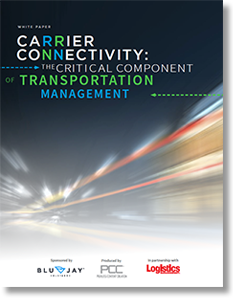With capacity crunches, driver shortages, and other challenges making an impact on shipper operations, companies with the best-connected, automated carrier networks are winning the transportation management game.
Transportation management isn’t a solo venture.
For a transportation management system (TMS) to move freight from origin to destination in the most reliable, efficient, and cost-effective manner possible, it has to include a level of carrier connectivity that no “manual” system can achieve.
In fact, carrier connectivity typically serves as the underpinning for the TMS and acts as the very fuel of the transportation management system.
In this white paper we’ll explore the value of building a TMS on carrier connectivity, explain the difference between doing this yourself versus working with a vendor that has baked this connectivity into its solution, and show the benefits that come from making this move early in the TMS selection and implementation process.
We’ll also hear from a logistics service provider that’s seeing the rewards of carrier connectivity and discuss the overall benefits that both shippers and carriers gain when transportation partners are included in the TMS loop.
Topics covered include:
“Having a network of carriers allows shippers to more seamlessly collaborate and exchange data with their carriers – and to do things that aren’t possible if you are dealing with one-on-one connections and/or if your multiple vendors aren’t on the same TMS platform.” – Bart De Muynck, Research Director at Gartner








